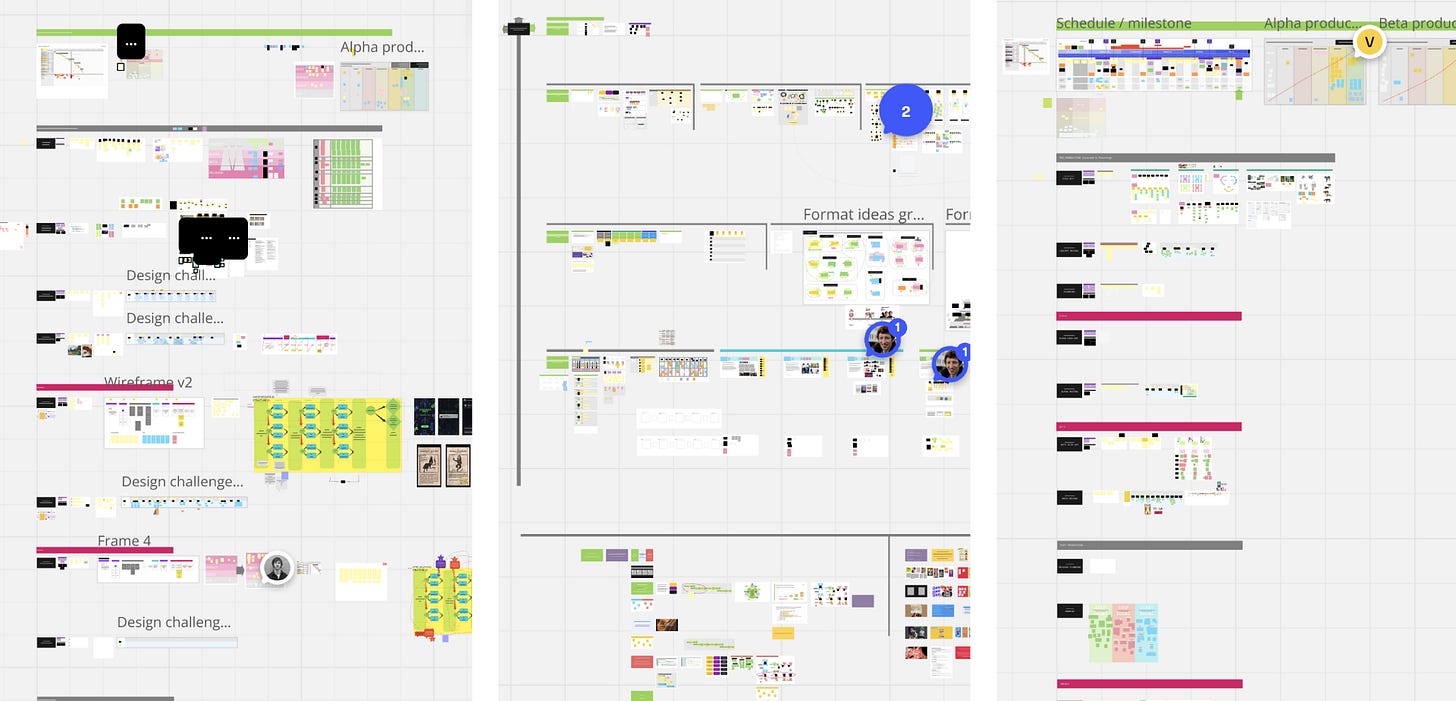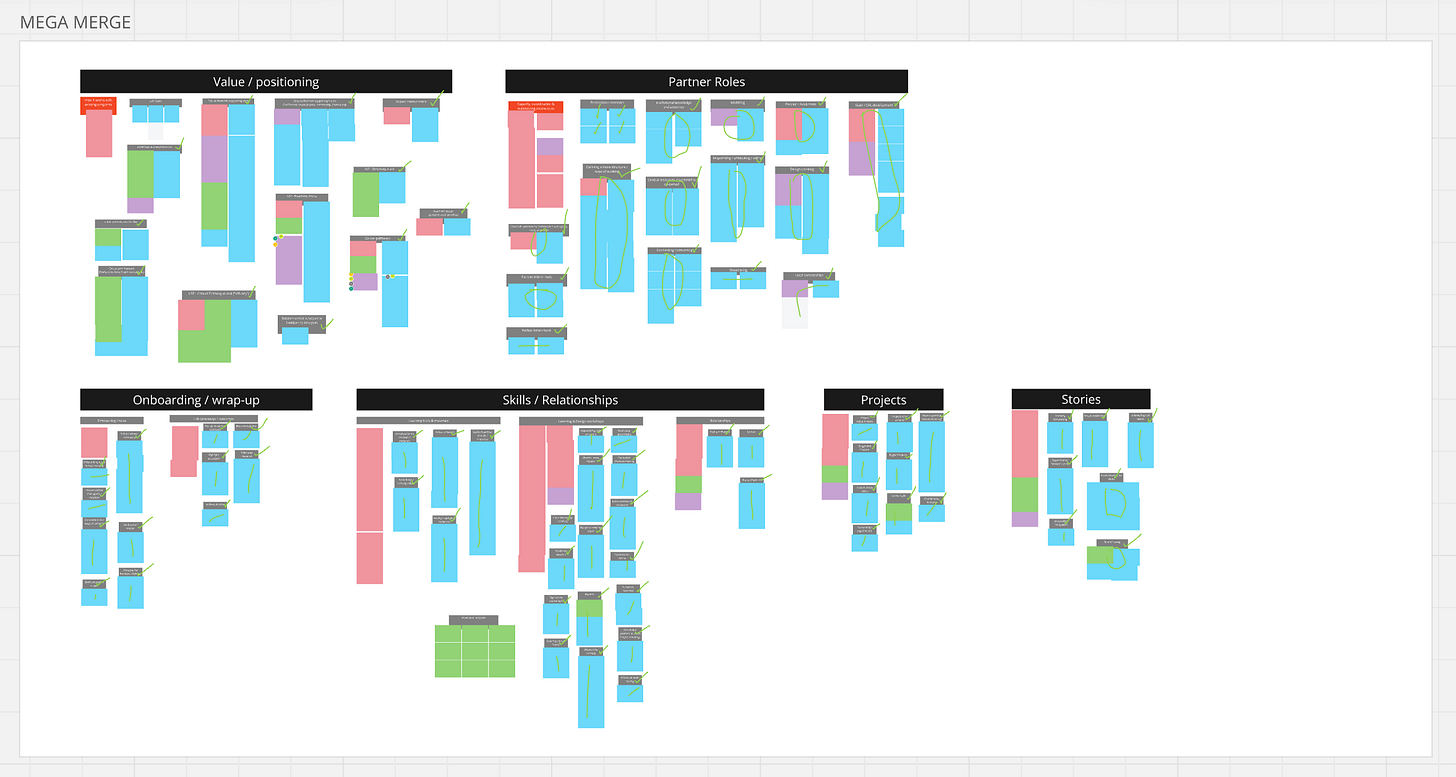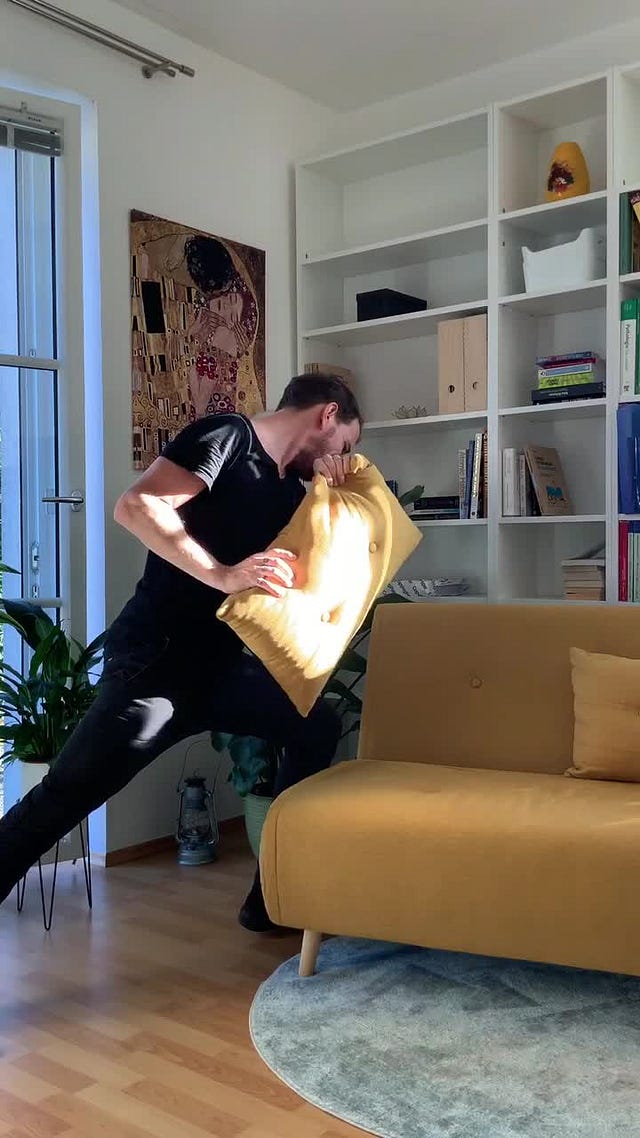May you live in Ouroboros times
Plus 64 mobiles, 21 resistance strategies and 3 collaborative structures
What’s the creature that eats its own head? The Ouroboros, apparently.
Exhibit #1 - the pleasingly cyclical, format-hopping journey of an old play (Hamlet), staged by out of work actors in an open-world game (Grand Theft Auto), about which they made a 90 minute documentary, for release in old-school cinemas. All that’s needed to complete the loop is staging an actual play! Short trailer:
Exhibit #2 - The Royal Shakespeare Company is in pre-production for a Macbeth-inspired computer game! The press release has this banging line:
The game Lili will see Macbeth’s witches reimagined as hackers…This modern twist on the Macbeth story explores technological domination, the manipulation of information, and institutional violence, reflecting the dark realities of inequities in our digital age.
Exhibit #3 - Adding further grist to the ouroboros that is our modern mediaverse, The Art Newspaper dives into the supposed resurgence of virtual reality. Glitch Studios, Nordland Teater, Teater Vestland and Teatret Vårt have created an award-winning blend of AR, VR and live theatre. For your vicarious R&D fix, step behind the scenes of this chunky-budget collaboration:
Exhibit #4 - OK Go have have form when it comes to creative music videos — see their beautifully choreographed, one-take video on eight treadmills. This recent release ups the ante by shooting on 64 mobile phones!
Power Station
The Power Station project is utterly brilliant. A street in Walthamstow, east London is aiming to install solar panels on every house. They’re led by two artists with a knack for eye-catching stunts, film-making and visual communication. Watch the video. I guarantee you will be inspired.
Notes on collaborative structures
This will be ludicrously boring for anyone that doesn’t spend time in Miro. I’m sorry. But if you do! What structures do you find lead to pleasant and productive collaboration?
My day-to-day work boils down to helping groups of people succeed in a creative endeavour. It’s really hard. I have endless respect for distributed teams that coordinate effectively, whether radical theatre troupe or coffeeshop franchise.
Miro is an online tool that people use for smashing Post-its around to create elaborate project plans or beautiful holiday mood boards. I love Miro because seeing things organised spatially often helps people build more coherent models of the problems we’re tackling and the ideas we’re developing.
The way things are organised in a virtual space will affect not just how it feels to collaborate in a group but the shape of the eventual output as well.
Consider three categories:
Chaos - no structure; evolves quickly, organically and randomly.
Linear - predictable structure; evolves along recognised phases or pathways.
Layers - iterative structure; evolves gradually in layers of detail.
Most creative projects follow a schedule, with familiar phases, so a mental model already exists that your Miro board can mirror. Add a row at the bottom for each subsequent phase (e.g. Alpha, or Beta) and add new content along that row.
This has benefits: theoretically people know that the most recent stuff is in the bottom row, to the right, and the project history is always visible to refer back to. As for drawbacks: the row-column structure often feels restrictive and information becomes duplicated leading to overwhelm.

The structure I’d like to use more is one I’m calling “Layers”, which takes practice but proves very productive. It assumes a number of thorny issues will persist over the duration of a project. Each one is represented by a growing clump of Post-its. Workshops develop a rhythm: visit each clump in turn, adding new information or filtering old stuff away. Groom as you go!

A more discrete implementation of this “Layers” approach is what we’ve come to call “The Nudge Map”, which I explained in a previous edition. It’s such a satisfying and productive exercise!
The folks at StoryThings talk about rhythm and culture in organisations. This visual model, I propose, is one simple tactic to build better rhythms.
Pop question
What would your own, personal museum be about? My current answer is “our burgeoning collection of posies in glass jars”. Anyway, real museums cost SO MUCH MONEY to run. This long read on the British Museum has a few fun bits of flavour:
The museum employs a Harris hawk to discourage crows, who have a propensity to drop stones on the curved glass roof of the central Great Court. Every time they crack one of these bespoke panes, Alice Fraser, the museum’s head of capital projects, told me, it costs tens of thousands of pounds to replace it.
Ouch!
Quick links
Immersive commission - This is an exciting £350k commission for the forthcoming London Museum.
Play policy - Apparently, “after a decade in the wilderness, play is about to rocket up the political and policy agenda in England”. There is lots of marketing / strategy gumph in the press release (“As play enters its renaissance era…” etc) but a network of peer-to-peer plaything libraries sounds cool. As does reclaiming residential streets and “transforming the public realm into people-focused play landscapes”. The UK government is developing a national policy in 2025. Watch this (play) space.
Stranger Folk - I’m gradually realising how enormous the National Trust is! So much going on. They recently launched this mental health initiative. And a time-travelling story app called HistoryScapes. Our app will launch in Autumn 2025. It’s a choose your own adventure game of folklore and embodied play. We’re thinking of calling it Stranger Folk.
You Can’t Post Your Way Out of Fascism - One of my favourite recent reads on “the state of the world”. Shouting angrily (or wistfully) into social media is a self-pacifying act.
Outrage burnout - a related idea to the above, which reminds me of one of my Ma’s lovely refrains when my brain is melting: don’t worry, we’re not built to process the scale of information thrown at us. Turning off might be a positive act of defiance. The goons could certainly do with less oxygen to their flames.
Strategic escalation - A great (practical) presentation on tactics for the T***p era with links to things like the Beautiful Trouble Toolbox and the excellent Fight the Coup resources. Practical steps for what lots of people are saying we need to do: get together, build connections and local resilience.
I forgot to mention it in January. Welcome to Season 5 of “Or So Ben Thought”. This is a posh way of saying it started in 2021. Four years later there are almost 400 subscribers! Toot toot.
Thanks for sticking around. What have you been up to?
B.
PS - Do you like mime? I like mime:
 Tiktok failed to load.
Tiktok failed to load.Enable 3rd party cookies or use another browser


